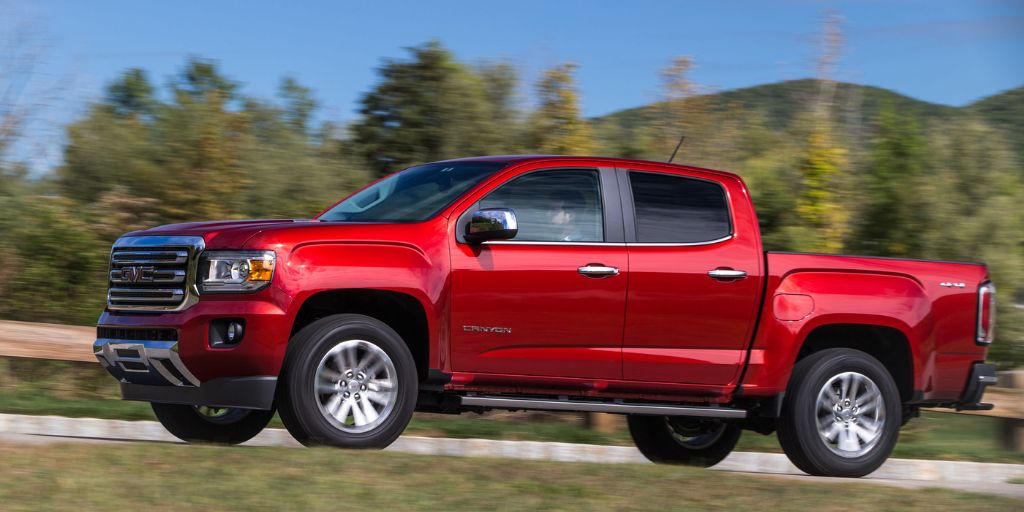When you buy a truck, you’re making a long-term investment. Whether it’s for work, adventure, or daily driving, durability and appearance matter just as much as performance.
A truck that racks up 200,000 miles is a testament to engineering, but what separates the great from the disappointing is how well that truck looks after all those miles.
Some trucks hold onto their rugged charm, their paint stays strong, and their interiors resist wear surprisingly well. These are the models you see on the road that still turn heads even after years of hard labor.
On the flip side, there are trucks that may keep running mechanically but show their age in all the worst ways. Fading paint, rust-prone panels, and worn-out interiors can make a once-proud vehicle look like it’s on its last legs, even if it’s still roadworthy.
In this article, we’ll spotlight five trucks that age gracefully, keeping their style and presence intact well past the 200,000-mile mark. Then, we’ll turn to five trucks that don’t hold up so well, despite what’s under the hood.
Whether you’re shopping for a used truck or holding onto one for the long haul, knowing which models maintain their looks—and which don’t—can save you time, money, and regret.
Also Read: 5 Cars That Make Great Weekend Warriors and 5 That Fall Flat
5 Trucks That Still Look Good After 200K Miles
Trucks are built to work hard, but let’s be honest: looks still matter. A truck that stays visually appealing after 200,000 miles is more than just a bonus—it’s a sign of thoughtful engineering and quality materials.
Whether it’s the strength of the paint job, the durability of the interior, or how well the body panels resist rust and dings, certain trucks manage to look nearly as good at 200,000 miles as they did when they rolled off the lot.
For many owners, that kind of longevity isn’t just satisfying—it’s also a matter of pride and resale value.
In a world where trucks are exposed to harsh weather, rough job sites, and daily wear and tear, only a few models manage to keep their edge.
These trucks are often the ones you see in the used market commanding high prices, not just because they’re reliable, but because they still look reliable. Even when parked next to newer models, they don’t seem out of place.
In this section, we’ll dive into five standout trucks known for their ability to age gracefully. These models hold their style, resist corrosion, and maintain interior integrity even after hundreds of thousands of miles.
Whether you’re planning to buy used or hold onto your current truck, these are the ones that will keep you proud of your ride well into the high-mileage zone.
1. Toyota Tacoma
The Toyota Tacoma has long been the poster child for durability, and it’s no surprise that it holds up exceptionally well visually too. Owners consistently report that their Tacomas, even after 200,000 miles, maintain a surprisingly fresh appearance.
One reason is Toyota’s commitment to quality paint and rust-resistant coatings, especially after early models faced criticism for frame rust issues, which the company corrected with later generations.
The Tacoma’s body panels are robust, and its simple yet rugged styling ages gracefully. Unlike trucks that follow fleeting design trends, the Tacoma’s look is more timeless, which means even older models don’t feel outdated next to newer ones.
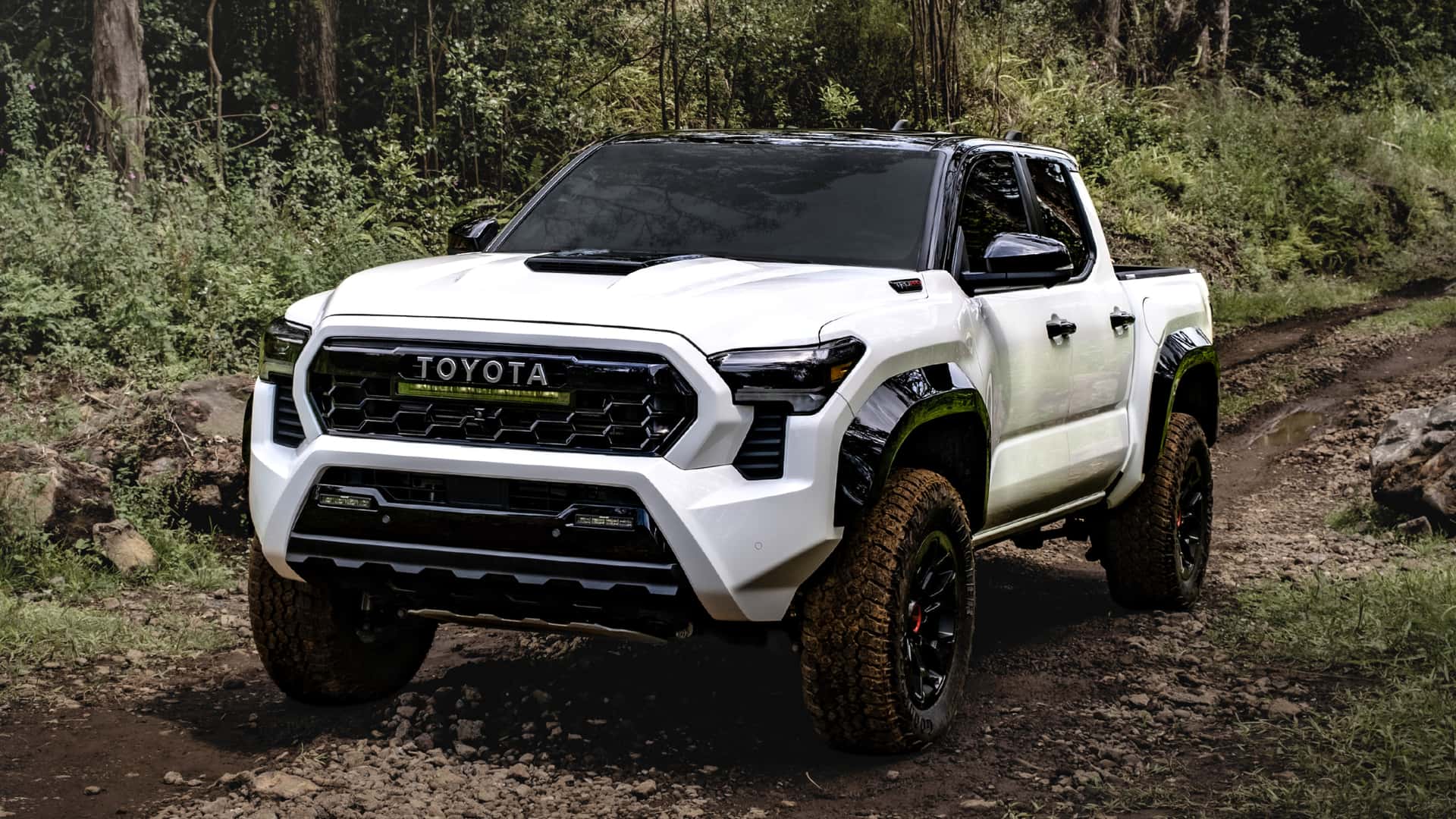
Inside, the Tacoma isn’t flashy, but it’s functional and hard-wearing. The cloth seats resist tearing and fading, and the dashboard materials are chosen for longevity over luxury.
Even in tough climates—from snowy northern winters to salty coastal environments—Tacomas tend to keep their paint intact and their trims solid.
Perhaps most telling is the resale market: Tacomas with over 200,000 miles often fetch higher-than-expected prices, thanks to their reputation for both mechanical and cosmetic durability.
Owners routinely post photos of their trucks with battle scars from off-roading but still showing off their shine after years of use. If you’re looking for a truck that can endure the miles and still look proud doing it, the Tacoma is an obvious standout.
2. Ford F-150
The Ford F-150 is one of the best-selling trucks of all time, and its enduring popularity isn’t just about power—it’s also about lasting appeal. The F-150, especially models from 2015 onward, features aluminum body panels that resist rust far better than traditional steel.
This means even in harsh climates—whether exposed to road salt, mud, or moisture—these trucks maintain their sharp looks for hundreds of thousands of miles.
High-mileage F-150s often retain their factory shine, and with routine washing and waxing, the paint stays vibrant. Owners report that door seals, trims, and badges also hold up well, giving the truck a cohesive look even at 200,000 miles.
Inside, the F-150 shines too. From the base XL to the luxurious King Ranch and Platinum trims, the materials are made to withstand long-term use. Seats resist sagging and tearing, plastics avoid warping, and tech interfaces generally stay functional.
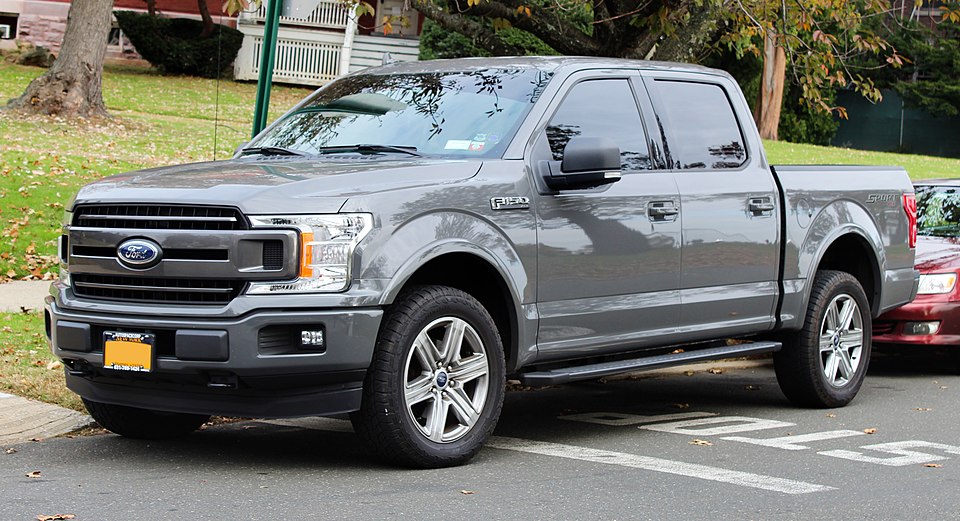
Ford has also paid attention to UV protection in the interior, reducing dashboard cracks and fading over time. Resale values reflect this endurance; an F-150 with high mileage still attracts buyers because of its reputation for both mechanical and aesthetic longevity.
Whether you’re using it as a daily workhorse or a family vehicle, the F-150 is a truck that lets you rack up the miles without sacrificing looks. It’s a reliable, hardworking truck that knows how to age gracefully, making it a standout choice for anyone thinking long-term.
3. Honda Ridgeline
While the Honda Ridgeline breaks the mold with its unibody design, it’s a standout in long-term durability, especially in how it holds its appearance.
The Ridgeline doesn’t have the same rugged, boxy shape as traditional trucks, but its sleek lines and smart design age exceptionally well.
Owners frequently praise its resistance to rust, particularly because the Ridgeline’s body panels fit tightly and don’t trap moisture—a common problem in body-on-frame trucks.
Even after 200,000 miles, the paint tends to maintain its luster, and the panel alignment remains sharp, contributing to a well-kept look.
Inside, Honda’s legendary attention to detail pays off. Dashboards, center consoles, and door trims are made from high-grade materials that resist cracking and fading, even after years of sun exposure and heavy use.
The seats—whether cloth or leather—typically wear well, and many Ridgeline owners report interiors that look “almost new” even at high mileage.
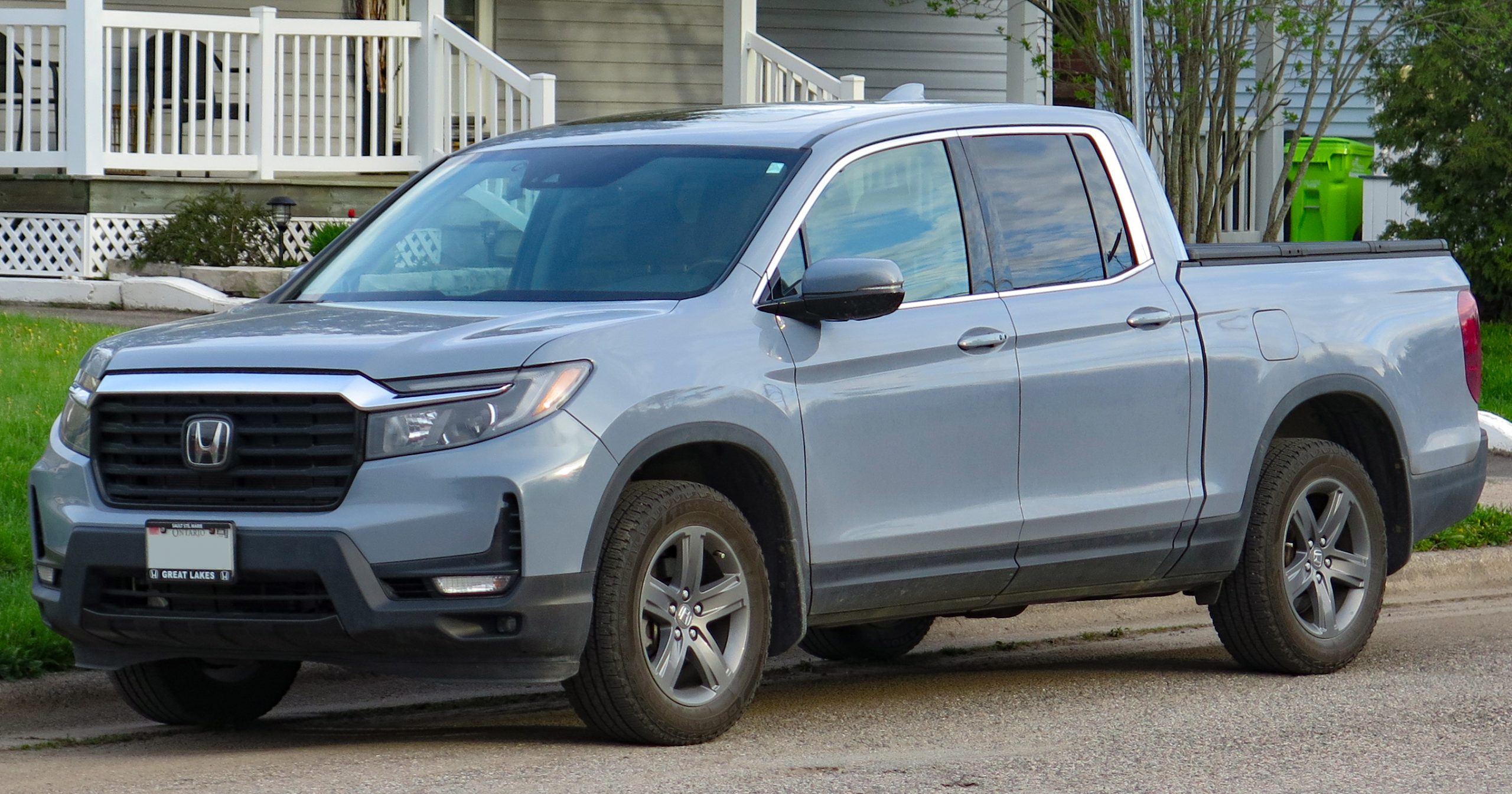
Another bonus is Honda’s focus on quiet cabins: insulation and trim pieces tend to stay intact, minimizing creaks and rattles that make trucks feel older than they are.
All told, the Ridgeline is a truck that might surprise skeptics with how well it ages. It’s practical, versatile, and manages to keep a fresh appearance even after many hard miles. For those who want a truck that doesn’t just last but looks good doing it, the Ridgeline is a smart, under-the-radar pick.
4. Chevrolet Silverado 1500
The Chevrolet Silverado 1500 is a mainstay in the truck world, known for its muscular build and staying power—and its good looks don’t fade quickly.
The Silverado’s design language has stayed relatively consistent, which means older models don’t look outdated next to newer ones.
Particularly after the 2014 redesign, Chevy improved paint quality and rust-proofing measures, which helped the Silverado resist the corrosion that plagued earlier models.
At 200,000 miles, a well-maintained Silverado can still look sharp. The body panels hold their shape, and the bold front grille retains its commanding presence.
Many owners in regions with heavy winters note that, with regular cleaning, their trucks stay remarkably rust-free. The Silverado also features durable headlight housings and trim pieces that resist yellowing and cracking.
Inside, the improvements are even more noticeable. The post-2014 interior overhaul brought better materials—more robust plastics, stronger seat fabrics, and more durable stitching.

Leather-equipped models, in particular, maintain their premium look, with minimal sagging and cracking even after years of use. Dashboards and controls hold up well too, avoiding the squeaks and rattles that signal aging in lesser trucks.
For buyers who need a workhorse that can clock serious mileage and still clean up for a night out or resale, the Silverado 1500 is an excellent option. It combines strength with style, proving that a hard-working truck doesn’t have to look worn out with age.
5. Ram 2500
The Ram 2500 is a heavy-duty truck that offers more than just brute force—it’s also built to look good for the long haul. With a bold design that emphasizes strength, the Ram 2500 commands attention even after racking up 200,000 miles.
The truck’s aggressive front-end styling, wide stance, and sculpted lines have aged gracefully across multiple model years. Newer generations also benefit from upgraded corrosion protection, making rust less of a concern than in older Rams.
High-mileage owners often report that the Ram’s paint holds up well, maintaining a deep shine with proper care. Body panels are solid and typically resist dents and dings better than expected, even when used for heavy-duty work.
The truck’s trim pieces, lighting elements, and badging also seem to stand the test of time without excessive fading or peeling.
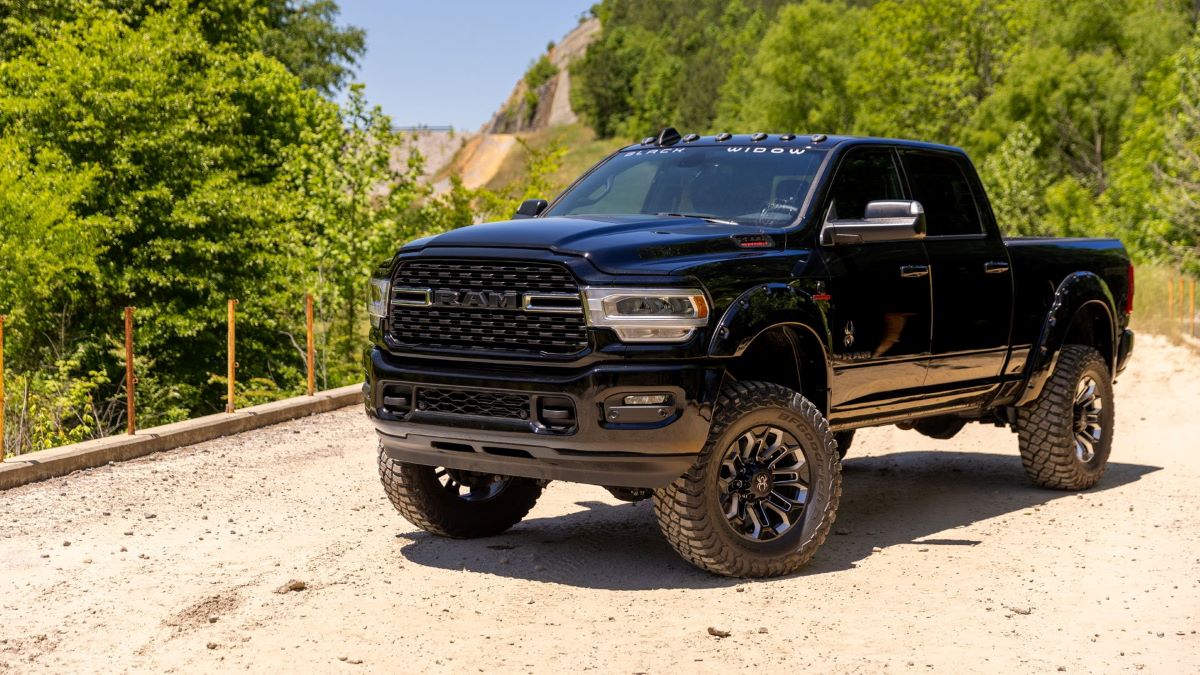
The interior is where the Ram 2500 really shines. Recent models, especially those in the Laramie and Limited trims, offer plush cabins with leather seats, premium stitching, and high-end finishes.
These materials hold up remarkably well even with daily use and exposure to the elements. Dashboard materials are soft-touch and resist cracking, and controls remain intuitive and solidly in place. Owners consistently praise the interior for retaining a near-new feel despite high mileage.
For anyone who needs a heavy-duty truck that looks as capable as it performs, the Ram 2500 offers an impressive blend of style and substance. It’s built to last—and to look good doing it.
5 Trucks That Age Terribly
Not every truck stands the test of time when it comes to appearance. While some models hold up beautifully after 200,000 miles, others seem to fall apart cosmetically well before they hit that milestone.
Whether it’s rust creeping along the fenders, peeling clear coats, sagging interiors, or general wear that seems to accelerate faster than expected, certain trucks just don’t keep their looks, even if the engine remains strong.
Aging terribly doesn’t always mean the truck stops running. In fact, many of the trucks we’re about to cover have solid mechanical reputations. But owning a truck that runs well and looks rough can be frustrating—and costly.
Rust repairs, upholstery replacements, and failing trim pieces can all add up over time, leaving owners wishing they’d picked a different model. A shabby appearance also tanks resale value, even if the truck is technically sound.
In this section, we’ll examine five trucks that are notorious for their premature aging. Some have well-documented rust issues, while others suffer from poor-quality interior materials that don’t hold up to daily wear and tear.
We’ll highlight why these trucks fall short in the looks department, even if they have redeeming qualities elsewhere.
If you’re thinking of buying a used truck or hanging onto your current one for the long haul, knowing which models age poorly can help you avoid future headaches. These are the trucks that may keep moving forward—but not without showing every mile along the way.
1. Nissan Frontier (Pre-2022 Models)
The Nissan Frontier is well-known for its mechanical reliability, but when it comes to aesthetics, older models fall short. Trucks from the early 2000s up through 2021 tend to age poorly, especially in regions with harsh winters.
Rust is a common complaint, particularly around the rear wheel wells, frame, and undercarriage. Even with regular care, many owners report visible corrosion appearing far sooner than expected.
The exterior design, while simple and rugged, also doesn’t help its case. Unlike competitors that updated their styling regularly, the Frontier stuck with the same basic look for years, making older models feel outdated long before they wore out mechanically.
Paint quality is another weak spot—clear coat peeling and faded panels are common issues that start to show around 100,000 miles.
Inside, the Frontier’s materials are durable but far from luxurious. Hard plastics dominate the cabin, and while they resist breaking, they don’t age gracefully.
Scratches, sun-fading, and worn seat fabrics are frequent complaints, giving the interior a tired look well before the odometer hits 200,000 miles.
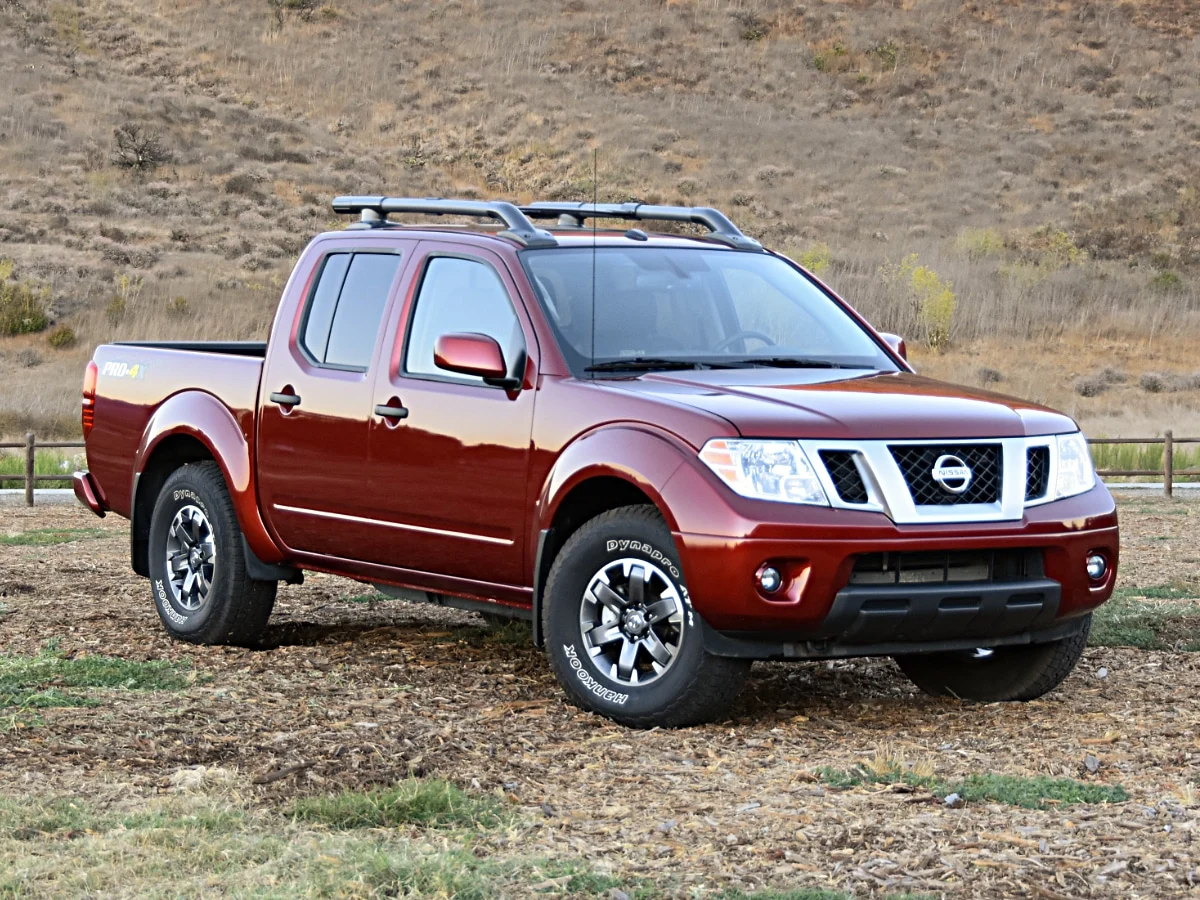
In summary, the Frontier may get you where you need to go without much fuss, but you’ll pay the price in curb appeal. It’s a solid truck mechanically, but its aging looks are hard to ignore, making it a tougher sell in the used market.
2. Chevrolet Colorado (Pre-2015 Models)
The Chevrolet Colorado from its first generation (2004–2012) and the early years of its second generation had a rough reputation for aging poorly. Rust is one of the biggest culprits, particularly along the rocker panels and underbody.
Even in moderate climates, these trucks often start to show rust spots well before 150,000 miles, and by 200,000, many are in rough shape.
Another significant issue is the paint. Chevy struggled with clear coat peeling during these years, and Colorado owners frequently report flaking and fading, especially on darker-colored trucks.
Body panels are also thinner than many full-size competitors, making dents and dings more common—something that adds up visually over time.
Inside, the situation doesn’t improve much. Early Colorados featured interiors with basic plastics and cloth that, while functional, don’t hold up well under prolonged use.

Cracking dash panels, worn-out seat fabrics, and sagging headliners are typical after several years of daily driving. Even with meticulous care, it’s difficult to keep these trucks looking fresh beyond 150,000 miles.
For buyers on a budget, the Colorado might seem appealing thanks to lower purchase prices. However, anyone considering a high-mileage example should be prepared for a truck that, while capable mechanically, often shows its age dramatically.
3. Dodge Dakota
The Dodge Dakota, especially models from the mid-2000s, is infamous for aging poorly despite a strong mechanical reputation.
Rust is perhaps the most notorious problem, with extensive corrosion around the fenders, door bottoms, and undercarriage reported by countless owners. Even Dakotas in milder climates tend to develop rust patches well before they hit 200,000 miles.
The Dakota’s paint also leaves something to be desired. Many owners report dulling and peeling clear coat by the time their trucks hit six or seven years old. Combine that with its dated design, and the Dakota often looks older than it really is.
Inside, the Dakota struggles with cheap-feeling materials that don’t withstand the test of time. Hard plastics dominate the dashboard and doors, and they’re prone to cracking and fading after prolonged sun exposure.
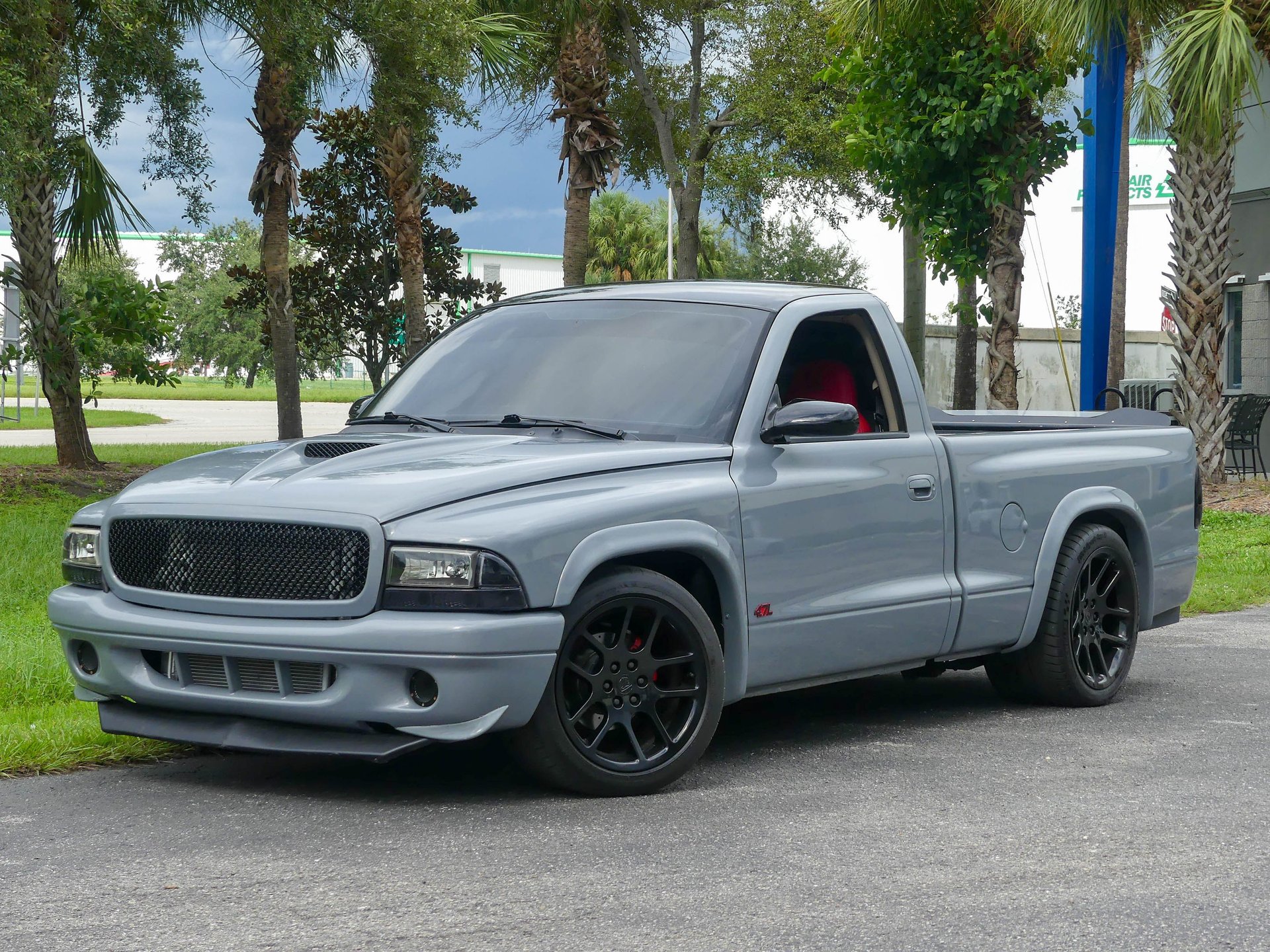
Seats—especially cloth—tend to wear thin, and leather-trimmed models often experience premature cracking. Sagging headliners and failing door seals round out a list of cosmetic issues that plague high-mileage Dakotas.
The Dakota is a solid work truck in many respects, but if you care about long-term appearance, it’s one of the most frustrating models out there. By 200,000 miles, even a well-maintained Dakota typically looks every bit its age—and often worse.
4. Ford Ranger (Pre-2019 Models)
Before its revival in 2019, the Ford Ranger spent years as a smaller workhorse in Ford’s lineup, but its older models didn’t age gracefully. Trucks from the 1998–2011 generation, in particular, are notorious for rust, especially in the Midwest and Northeast.
Frame corrosion is a significant issue, and rust around the wheel arches and tailgate often appears by 100,000 miles.
Paint quality was hit-or-miss. Lighter colors fared better, but darker hues often suffered from fading and clear coat failure over time.
While the Ranger’s boxy styling is considered timeless by some, it does little to mask the wear and tear that accumulates on these aging trucks.
Inside, the Ranger featured a barebones cabin that, while durable, lacked refinement. Plastics are hard and prone to cracking, and seats—particularly in work-truck trims—tend to flatten and fray with age. Headliners sag, and weatherstripping often deteriorates, leading to wind noise and leaks.

Even though the Ranger is beloved for its simplicity and reliability, it’s hard to ignore how quickly it starts to look worn out.
By the time one reaches 200,000 miles, it’s usually showing every year of its life unless it’s been babied and garaged—which is rare for a truck built to work.
5. GMC Canyon (First Generation)
The first-generation GMC Canyon (2004–2012) shares much of its DNA—and many of its flaws—with the early Chevrolet Colorado.
Rust issues are rampant, with owners reporting corrosion on frames, wheel wells, and rocker panels long before high mileage is reached.
The underbody rust is especially troubling, often compromising structural integrity by the time the truck hits 200,000 miles.
Paint quality was also problematic. Clear coat failure and fading, particularly on the hood and roof, are common complaints.
Even well-maintained trucks often display dull, chalky paint after a few years, making them look far older than they are.
The Canyon’s interior, while practical, wasn’t designed for longevity. Hard plastics dominate, and they scratch and fade quickly.
Cloth seats wear down fast, and dashboard panels are prone to cracking after extended exposure to sun and heat. Many owners also note that trim pieces loosen over time, contributing to a rattly, worn-out feel in high-mileage examples.
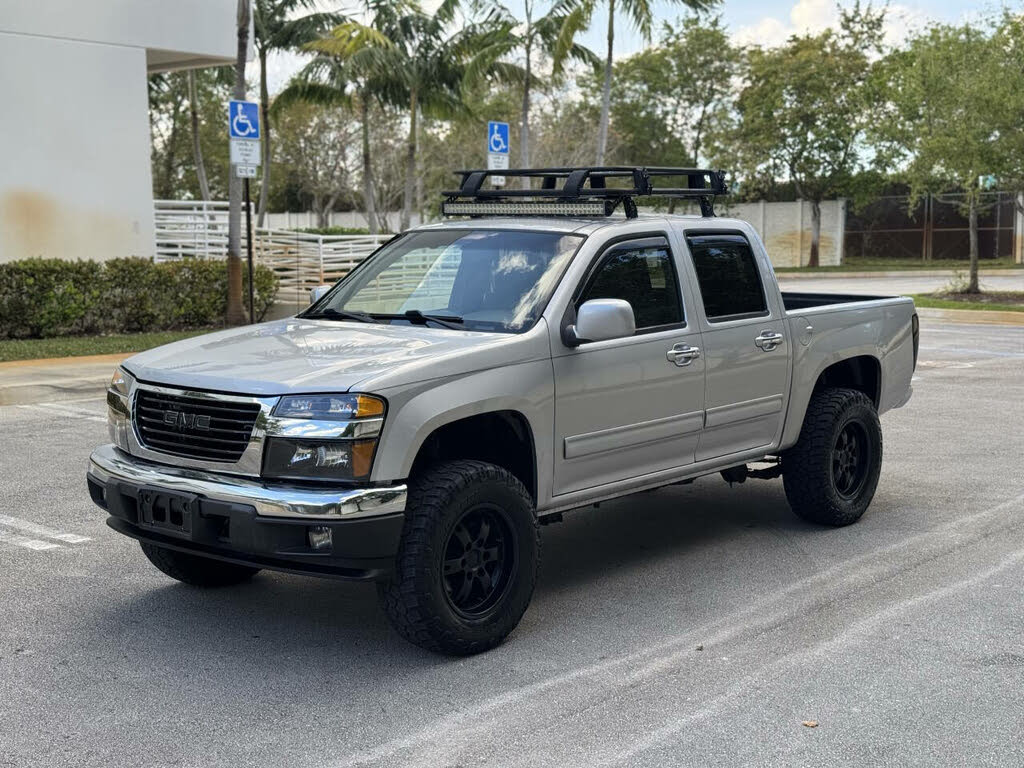
While the Canyon’s mechanical reliability is generally acceptable, its cosmetic aging is a frequent source of frustration.
For those who care about aesthetics as much as durability, the first-gen Canyon is a cautionary tale. By the time it crosses the 200,000-mile mark, it often looks ready for retirement—whether it’s mechanically there yet or not.
When it comes to trucks, lasting power is about more than just what’s under the hood. Sure, we all want a vehicle that can rack up the miles without constant trips to the mechanic, but how a truck looks after those miles matter too.
As we’ve seen, not all trucks age equally. Some hold their heads high even at 200,000 miles, still turning heads in parking lots and retaining resale value thanks to smart design and durable materials.
Others, despite solid mechanical bones, end up looking rough long before their time, with rust, fading paint, and worn-out interiors dragging down their appeal.
In the first part of this article, we celebrated trucks like the Toyota Tacoma, Ford F-150, Honda Ridgeline, Chevrolet Silverado 1500, and Ram 2500—models that not only keep running strong but maintain a sharp, well-kept appearance even after serious mileage.
These trucks prove that with the right engineering, high-quality materials, and a bit of owner TLC, it’s possible to have a long-lasting vehicle that still looks great years down the line.
Conversely, in the second part, we looked at trucks that tend to age less gracefully. The Nissan Frontier, Chevrolet Colorado, Dodge Dakota, Ford Ranger, and GMC Canyon all have their merits, but their tendency toward rust, cheap interior materials, and cosmetic wear can make them feel tired well before the odometer rolls over 200,000 miles.
Ultimately, knowing how a truck ages—both mechanically and cosmetically—can save you a lot of frustration (and money) down the road.
Whether you’re buying new or used, or planning to keep your current truck for the long haul, it’s smart to consider not just how well it drives but how well it wears. After all, a great truck should work hard and still look good doing it.
Also Read: 5 Cars With Fast Touchscreens and 5 That Lag Like Old Phones

